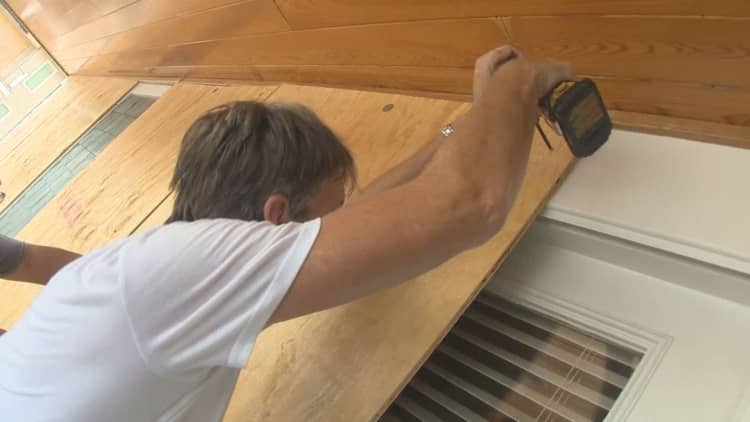As Hurricane Florence barrels toward the East Coast, maybe nothing can portend the storm's wrath quite like photos taken from space.
On Wednesday, NASA shared a view of Hurricane Florence taken that morning from a high-definition camera outside the International Space Station (embedded below). The hurricane, which has been upgraded to a category 4, is expected to pummel the coastlines of South Carolina and North Carolina in the coming days, with the National Hurricane Center warning of a "life-threatening storm surge" as well as catastrophic flash flooding.
Indeed, NASA called the view of Florence from the Space Station "stark" and "sobering."
Additionally, European Space Agency astronaut Alexander Gerst took to Twitter on Wednesday to share photos of the hurricane from space, while stressing the severity of the storm.
Hurricane Florence is "so enormous," says the tweet, that despite being in space, the astronauts could only capture the storm with a super-wide angle lens.
In another image tweeted by Gerst on Wednesday (one of which was NASA's "Image of the Day") the seriousness of the storm can be clearly seen.
"Ever stared down the gaping eye of a category 4 hurricane? It's chilling, even from space," Gerst captioned the photos.
Another photo (embedded below) was snapped on Sept. 10 by astronaut Ricky Arnold while aboard the International Space Station. The photo shows the churning storm, which according to Arnold, was later joined by Hurricane Isaac and Hurricane Helene.
NASA is also using is technology and satellites to provide updates of Florence here, tracking the storm as it prepares to hit the southeastern U.S.
"NASA-NOAA's Suomi NPP satellite passed over the eye of powerful Category 4 Hurricane Florence and found the storm over 400 miles in diameter and the capability to generate very heavy rainfall," NASA's most recent update, published Sept. 12, reads. For perspective, NASA adds that 400 miles is the distance between Baltimore, Maryland to Boston, Massachusetts.
In the past, NASA has leveraged its technology and resources to help with hurricane relief efforts. For example, after Hurricane Maria hit Puerto Rico, NASA used its Black Marble HD technology (which is usually used for NASA to see lights on Earth at night) to help identify where power had been knocked out.
NASA's Disasters Program also closely monitored the California's disastrous wildfires in December, providing data that showed hourly updates as to where the fires were burning the hottest.
Don't miss: See the epic video from this NASA photographer's melted camera after a SpaceX launch



